Saracen’s Ariel 50E Elite is the brand’s only electric mountain bike and is aimed squarely at the all-mountain and enduro categories. It features 29in wheels front and back for sizes large and extra-large or a mullet setup with a 27.5in rear wheel for small and medium frames.
Its single-pivot linkage-driven suspension gives 150mm of rear-wheel travel, damped by Fox’s heavy-hitting DHX2 Factory rear shock and paired with a 160mm-travel Fox 38 Factory fork.
It’s fitted with a host of descent-ready parts, including Shimano’s 12-speed XT M8100 drivetrain and four-piston brakes.
Shimano’s latest EP8 drive unit, with 85Nm of torque, is powered by Shimano’s 504Wh battery, giving it the smallest capacity in this year’s Bike of the Year category.
Saracen Ariel 50E Elite frame and suspension
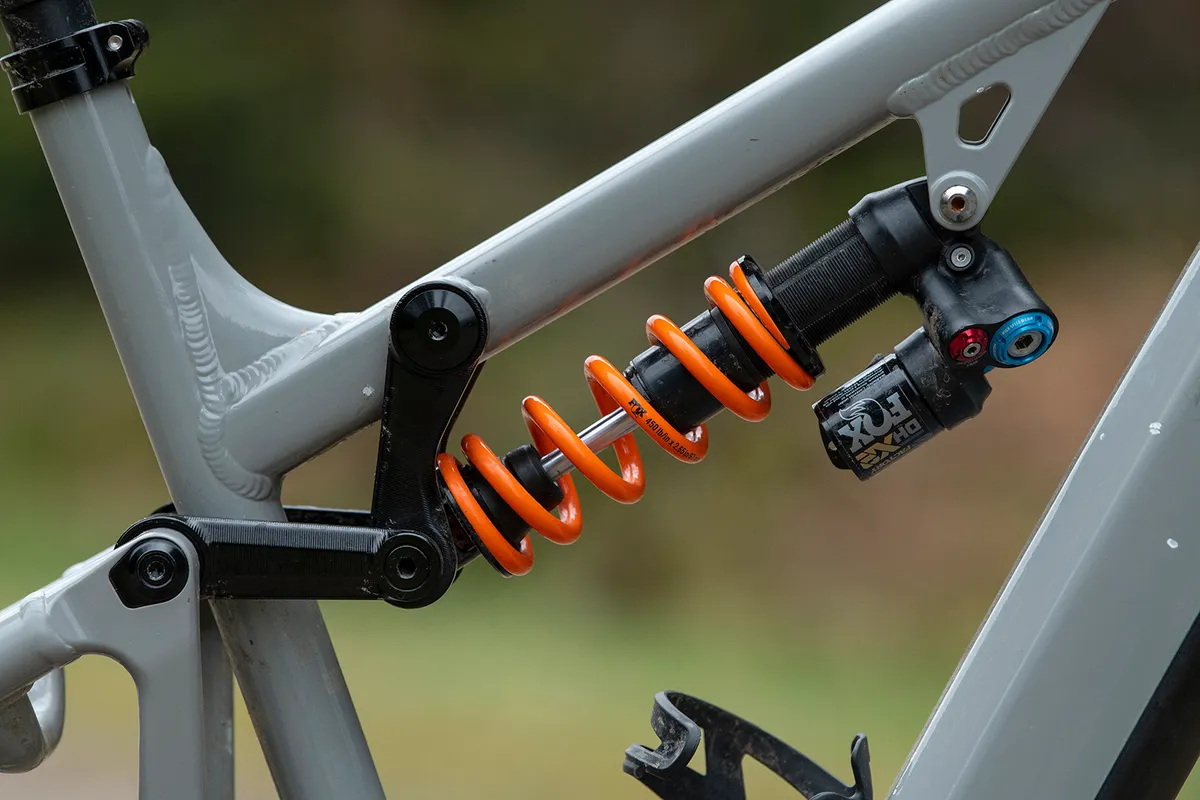
Built from Saracen’s Series 3 custom-butted hydroformed 6013 aluminium, the Ariel’s straight tubes look slender compared to other electric bikes, helped by the straight line drawn along the length of the top tube and seatstays.
The frame features internally routed cables, bottle cage mounts on the top side of the down tube and in-built chainstay protection.
From the factory, the large and extra-large frames are fitted with 29in wheels both front and back, while the small and medium bikes get a 27.5in rear-wheel mullet configuration.
However, the bike’s linkage is convertible, which means either wheel-size combination can be run on any of the frame sizes. The rear axle uses the 12x157mm Super Boost spacing rather than the standard 148mm Boost width.
Suspension kinematics
Saracen’s Signature TRL suspension layout uses a single-pivot design with a linkage to drive the shock. It features 150mm of frame travel delivered via a coil-sprung shock.
According to Saracen’s shock force graph, the Ariel 50E has a rate of progression that increases in an almost linear fashion through its travel, indicating that it’s well suited to the fitted coil shock.
Anti-rise is high, sitting between 125 per cent at full travel and just over 95 per cent at bottom-out. This means the bike’s suspension is more likely to compress or stay neutral when the rear brake is applied.
At sag, which is roughly 30 per cent of its travel, anti-squat sits at 107 per cent and 124 per cent in the 10t and 51t cassette sprockets respectively. This means the bike should resist suspension compression, known as bob, caused by pedalling forces.
Saracen Ariel 50E Elite battery and motor
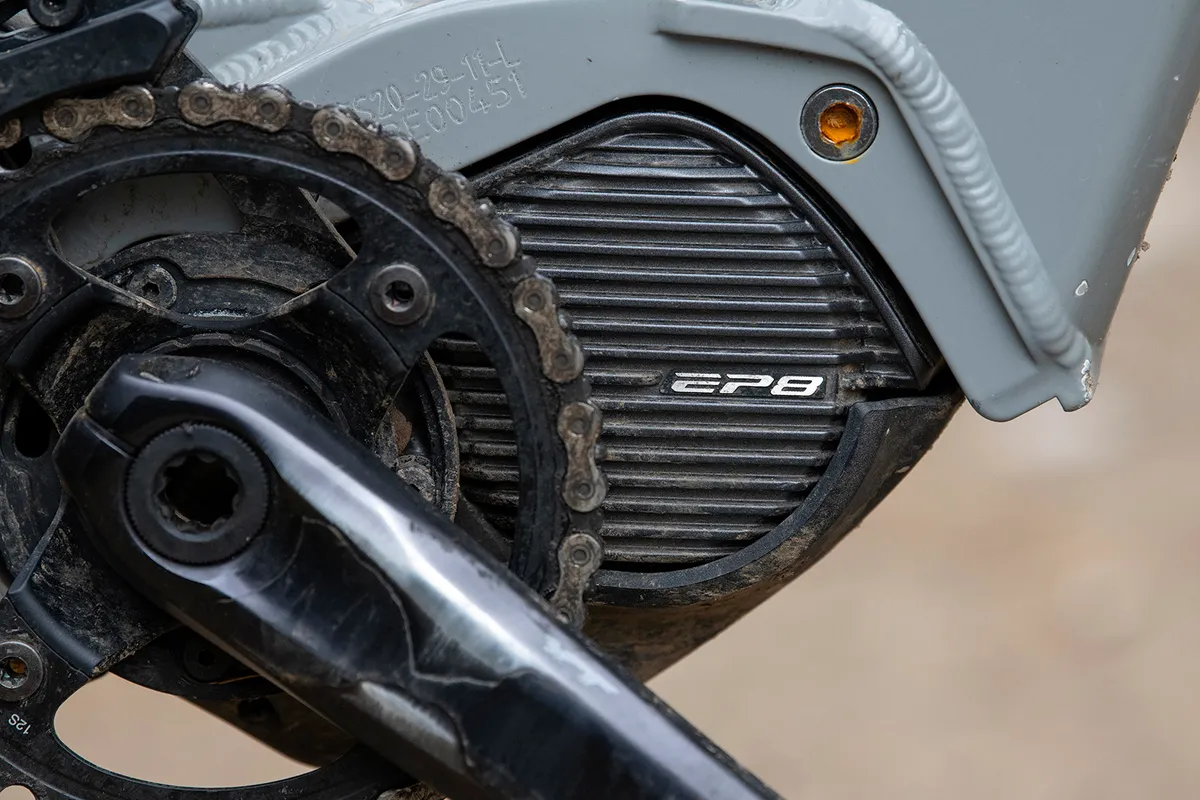
The Ariel 50E Elite is fitted with Shimano’s EP8 motor, with 85Nm of torque and 250W of power, and is powered by Shimano’s own 504Wh-capacity battery.
Identical to all other EP8 motors, it has three riding modes (Eco, Trail, Boost) and a Walk mode.
The modes’ outputs can be tuned in the Shimano e-Tube Project smartphone app when it is connected to the bike via Bluetooth.
Saracen Ariel 50E Elite geometry
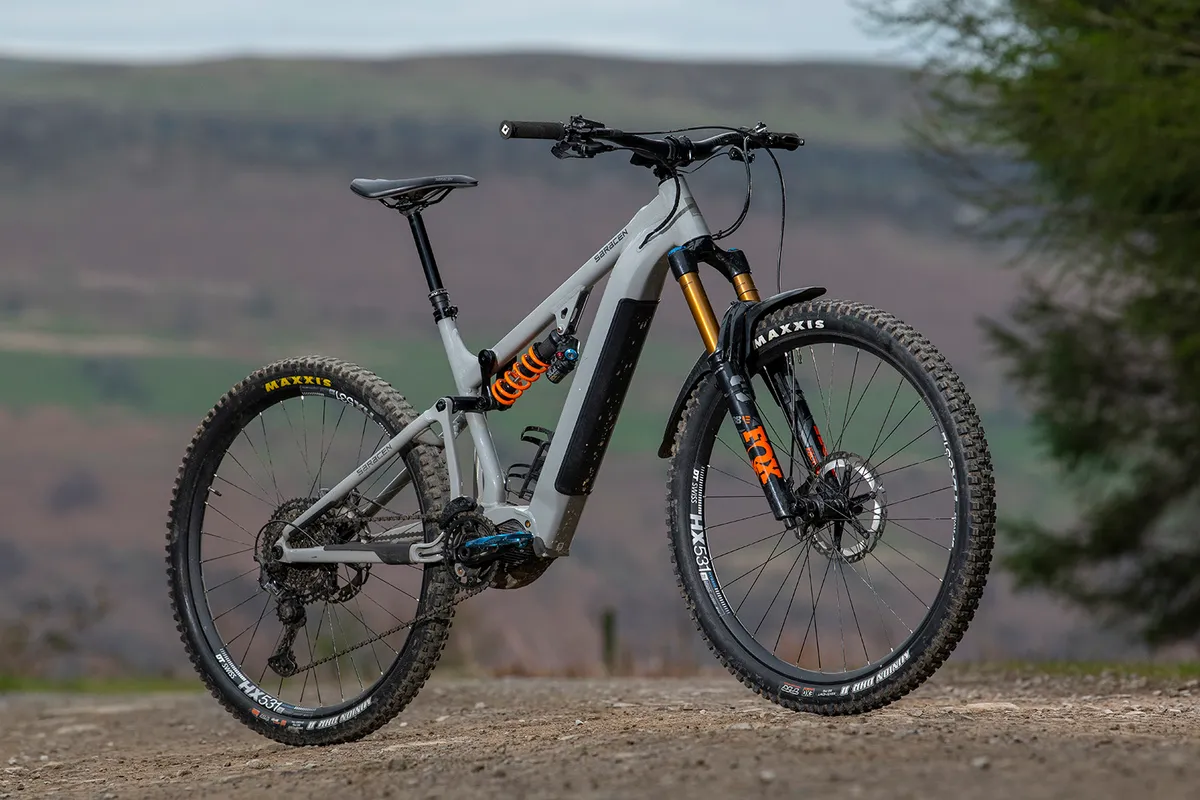
The geometry looks impressively modern on paper. My size-large test bike has a 505mm reach figure – the longest of all the bikes on test – and lengthy 465mm chainstays with a 1,304mm wheelbase.
These are coupled with a steep 76-degree seat tube angle and a 65-degree head tube angle. Bottom bracket height sits at 343mm, which is low for a 29in-wheeled bike.
These figures should make the Ariel 50E a hard-charging, highly capable descender better suited to enduro riding rather than trail-centre laps. However, the head angle is a bit of an outlier; I’d usually expect to see a slacker number mated with the bike’s other figures.
| | S | M | L | XL |
|---|---|---|---|---|
| Seat angle (degrees) | 76 | 76 | 76 | 76 |
| Head angle (degrees) | 65 | 65 | 65 | 65 |
| Chainstay (mm) | 465 | 465 | 465 | 465 |
| Seat tube (mm) | 370 | 410 | 460 | 510 |
| Head tube (mm) | 115 | 115 | 125 | 140 |
| Bottom bracket drop (mm) | 25 | 25 | 25 | 25 |
| Wheelbase (mm) | 1,250 | 1,275 | 1,304 | 1,330 |
| Standover (mm) | 794 | 794 | 793 | 793 |
| Stack (mm) | 632 | 632 | 641 | 655 |
| Reach (mm) | 455 | 480 | 505 | 525 |
Saracen Ariel 50E Elite specifications
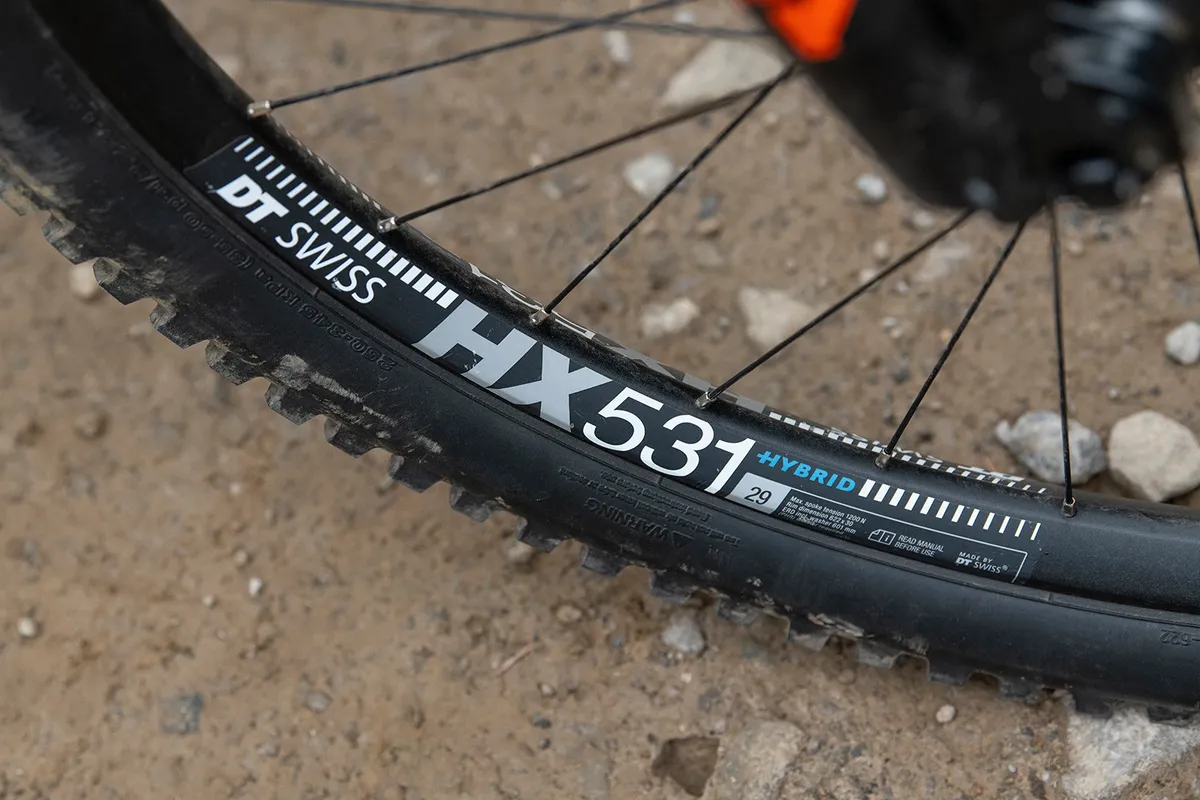
For the most part, the 50E Elite is built using top-spec branded parts. Fox’s Factory 38 and DHX2 dampers are welcome, highly capable choices, and the XT M8100 drivetrain and brakes are well-suited to the bike too.
The DT Swiss HX 531 rims, built on XT hubs are good, reliable wheels.
The 50E Elite features a Race Face carbon Next R bar and alloy Turbine stem combo, and the KS Lev Integra dropper has 150mm of travel.
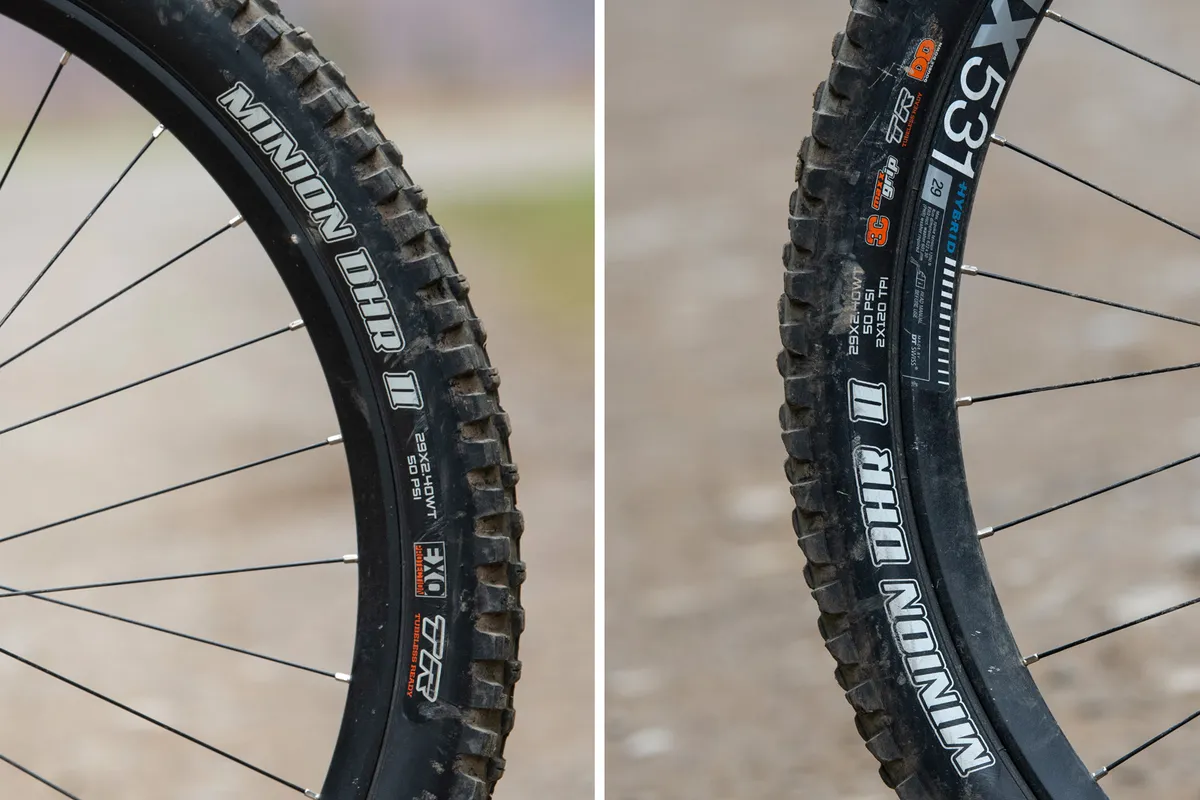
The dual-compound EXO-casing Maxxis tyres seem an odd choice, however.
I suspect they’ve been specced to keep weight and cost down, but the thin casings aren’t suited to ebike use and the dual-compound rubber isn’t as sticky as the Maxxis 3C, although the Minion DHR II tread pattern is a top performer.
My large test bike weighed 24.03kg without pedals.
Saracen Ariel 50E Elite ride impressions
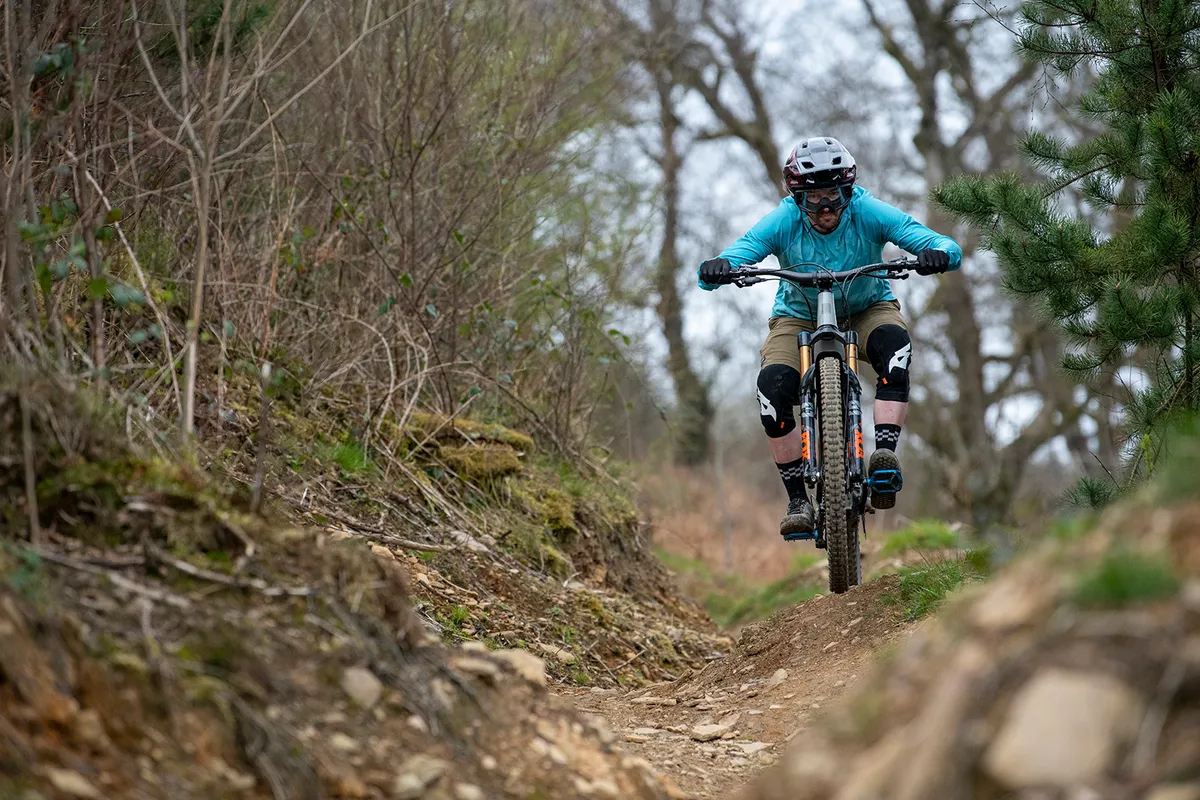
I tested the Ariel on my home trails in Scotland’s Tweed Valley, also used for the UK round of the Enduro World Series.
Testing happened over a period of several months in conditions ranging from full-winter wet through to blown-dry dust including one of the driest Januarys on record.
Saracen Ariel 50E Elite setup
Thanks to the Fox 38 fork and Fox DHX2 rear shock, the 50E Elite was easy to set up. I inflated the fork’s spring to 98psi, installed three volume-reducer spacers and turned the compression and rebound adjusters to fully open.
The rear shock’s stock 450lb/in spring gave 16mm of shaft sag (24.62 per cent), which, thanks to the linear spring rate, is slightly less than I would run on an air shock with a volume-adjustable spring to increase progression.
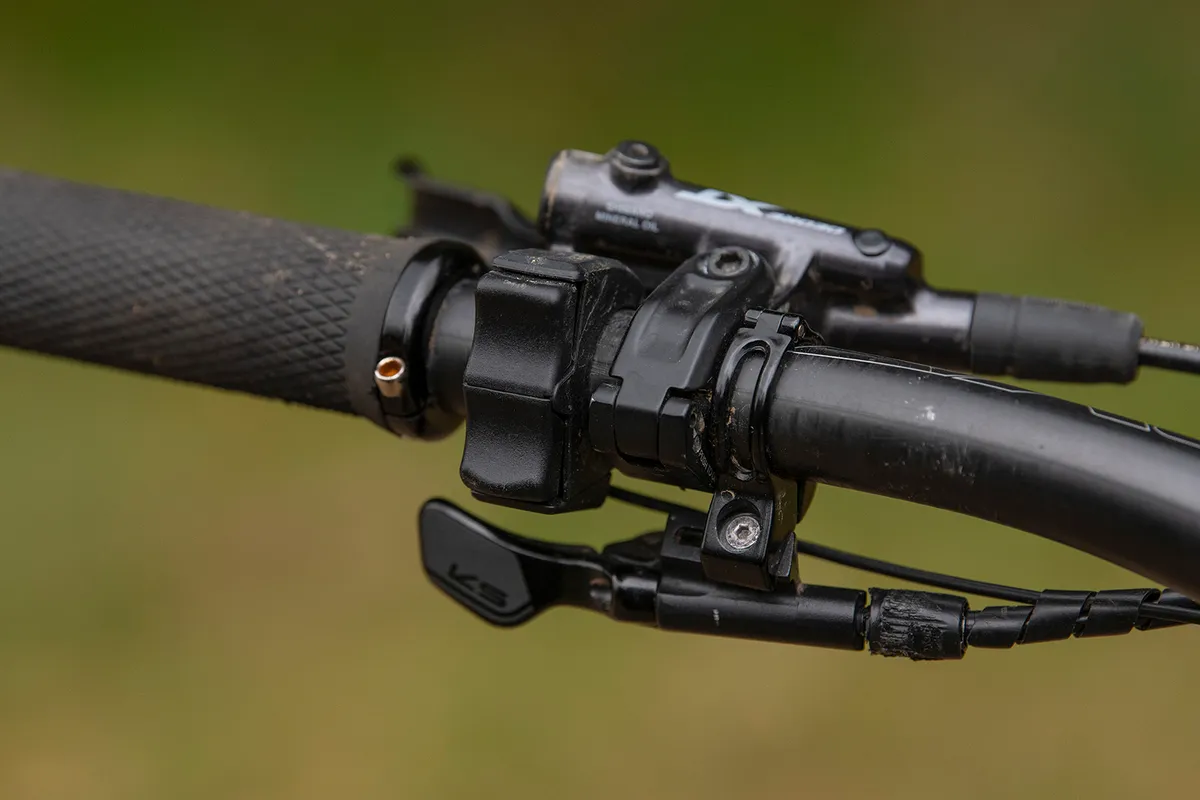
However, on the trail the 450lb/in spring felt as though it offered a good balance between a supple beginning stroke, impressive mid-stroke support and plenty of bottom-out resistance.
I inflated the EXO casing tyres harder than I would compared to versions with sturdier casings in order to increase tyre stability and protect against pinch-flat punctures.
Saracen Ariel 50E Elite climbing performance
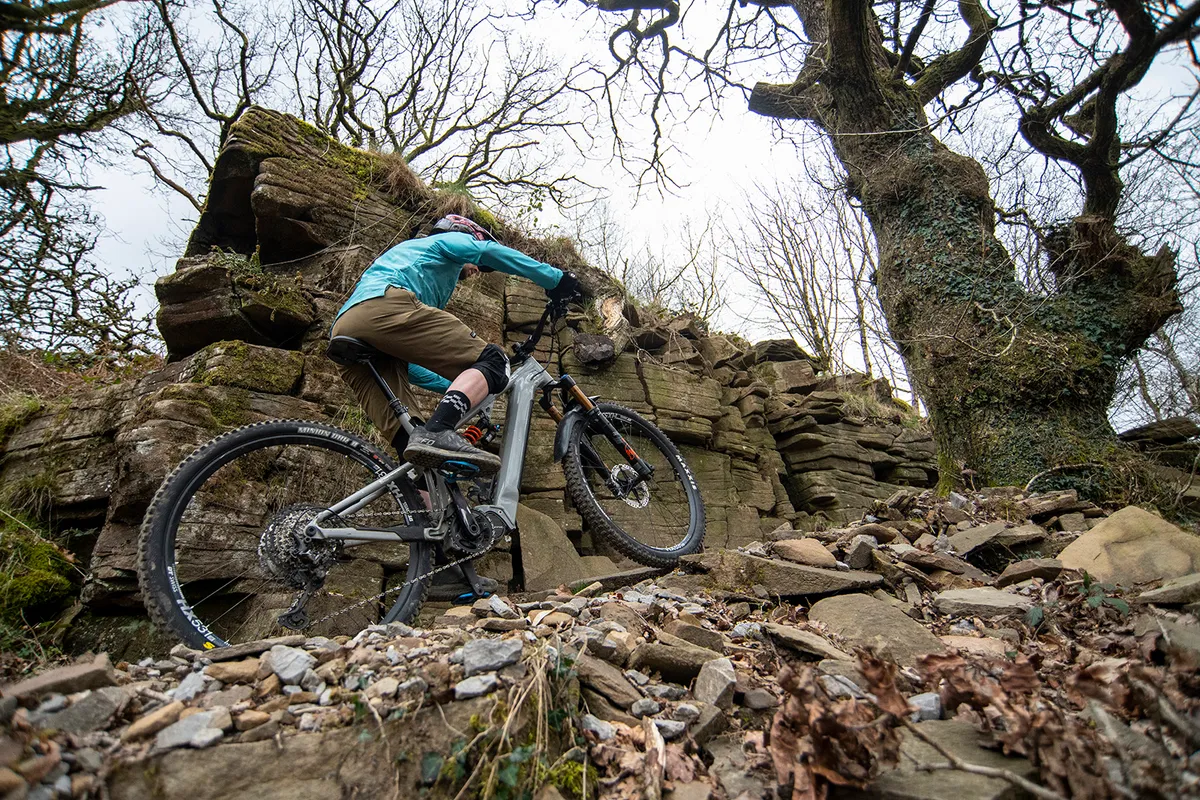
The coil-sprung shock helps the rear suspension flutter over small and mid-sized bumps with a super-responsive feeling, improving climbing traction and seated comfort.
This makes the Ariel 50E great fun to blast around on riding worn-out trail centre runs because the rear end does a large portion of the heavy lifting in smoothing out the trail.
Thanks to the suspension kinematics, it doesn’t blow through its travel on larger hits and compressions. This made it possible to pump and flow my way down trails where speeds exceeded the assistance limit, and also reduced the see-sawing feeling that bikes that blow through their travel can create when ridden through successive compressions at speed.
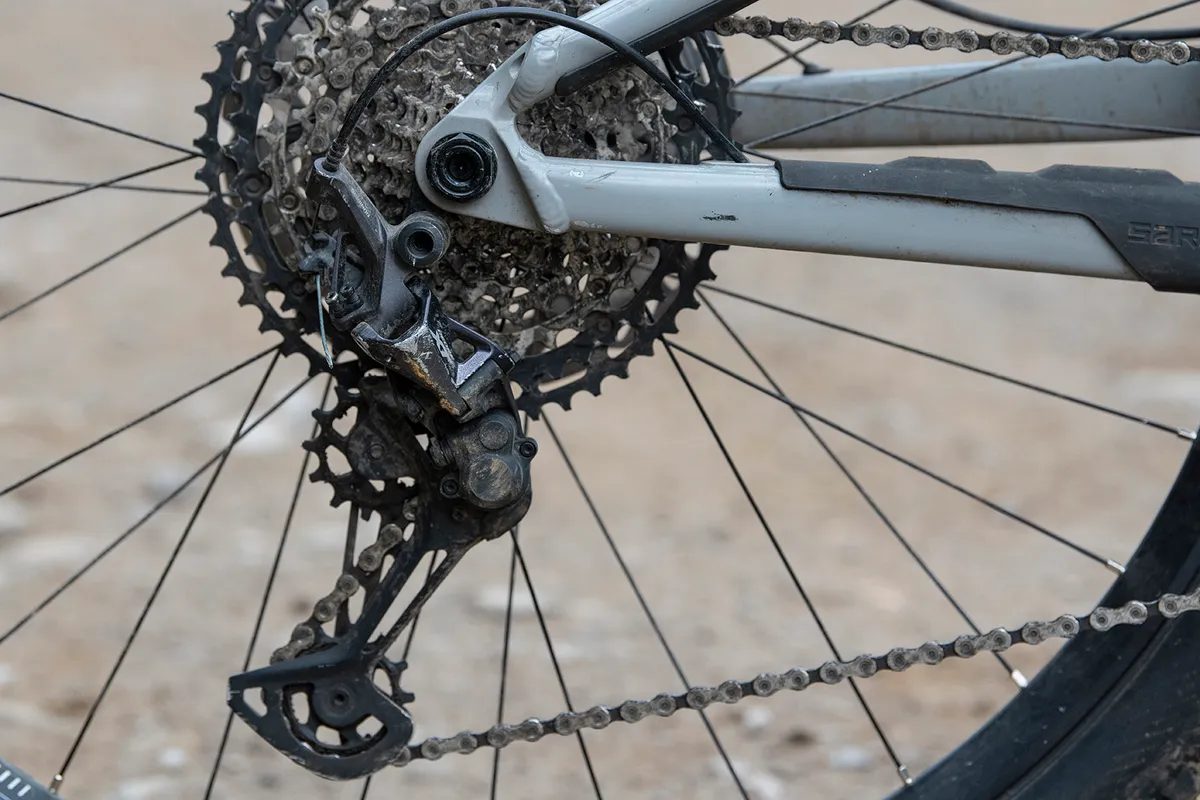
The hard-compound tyres dug into soft mud well and rolled quickly on hardpack surfaces.
However, they struggled to provide grip on slick rocks or roots, where the motor’s power quickly overwhelmed the traction on offer.
The higher pressures required to improve carcass stability also contributed to some pinginess on particularly rough trails – a trait easily mitigated by upgrading to heavier-duty, better-damped tyres.
Its generous wheelbase, created by a long front centre and chainstays, augments the Ariel’s climbing prowess. Pointed uphill, only the biggest weight shifts upset the front-to-back balance, and I was surprised at just how far back my weight needed to be to make the front wheel lift or the steering become vague.
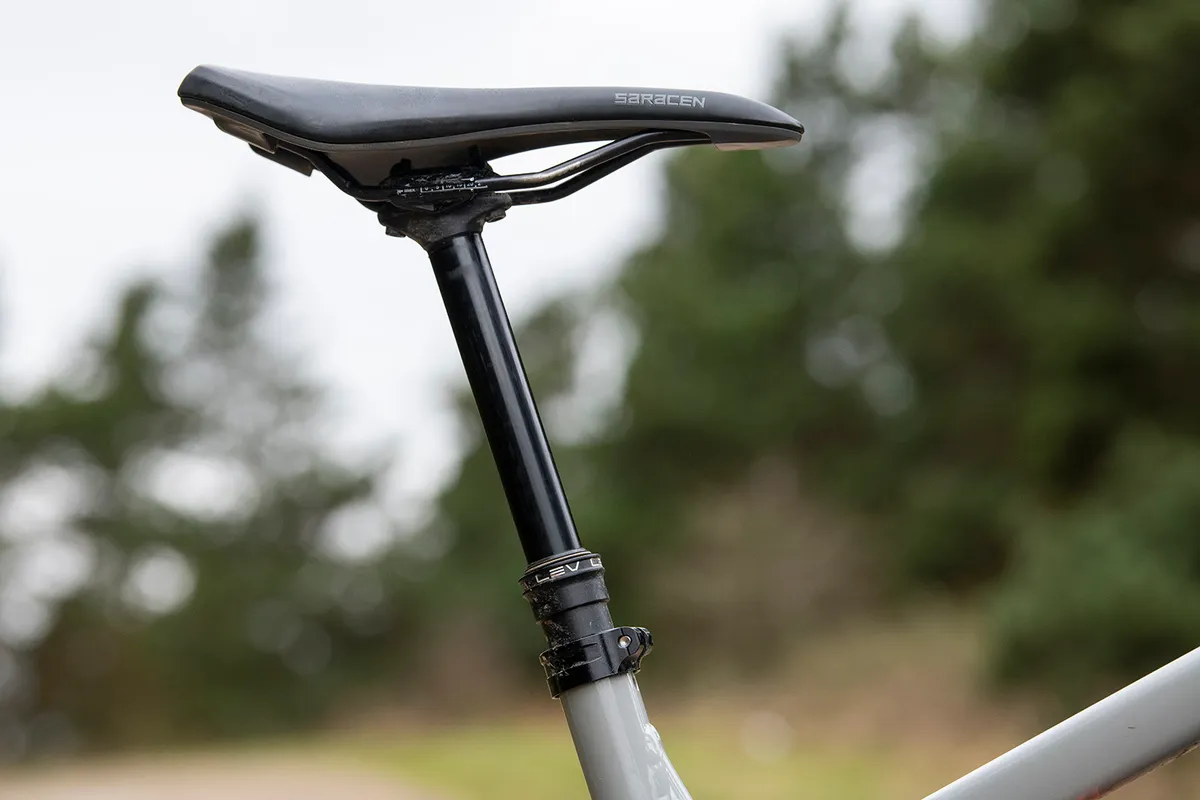
With the amount of bike that was both fore and aft of me, my weight was distributed evenly between the wheels, improving the amount of easy-to-apply grip. This also helped reduce fatigue, because I had to do less work to keep the Ariel tracking in the right direction compared to shorter bikes.
If I was being picky, the seat tube angle could be marginally steeper to improve ascending performance further, especially given the lengthy top tube means there’s more than enough room inside the front triangle to adjust the angle.
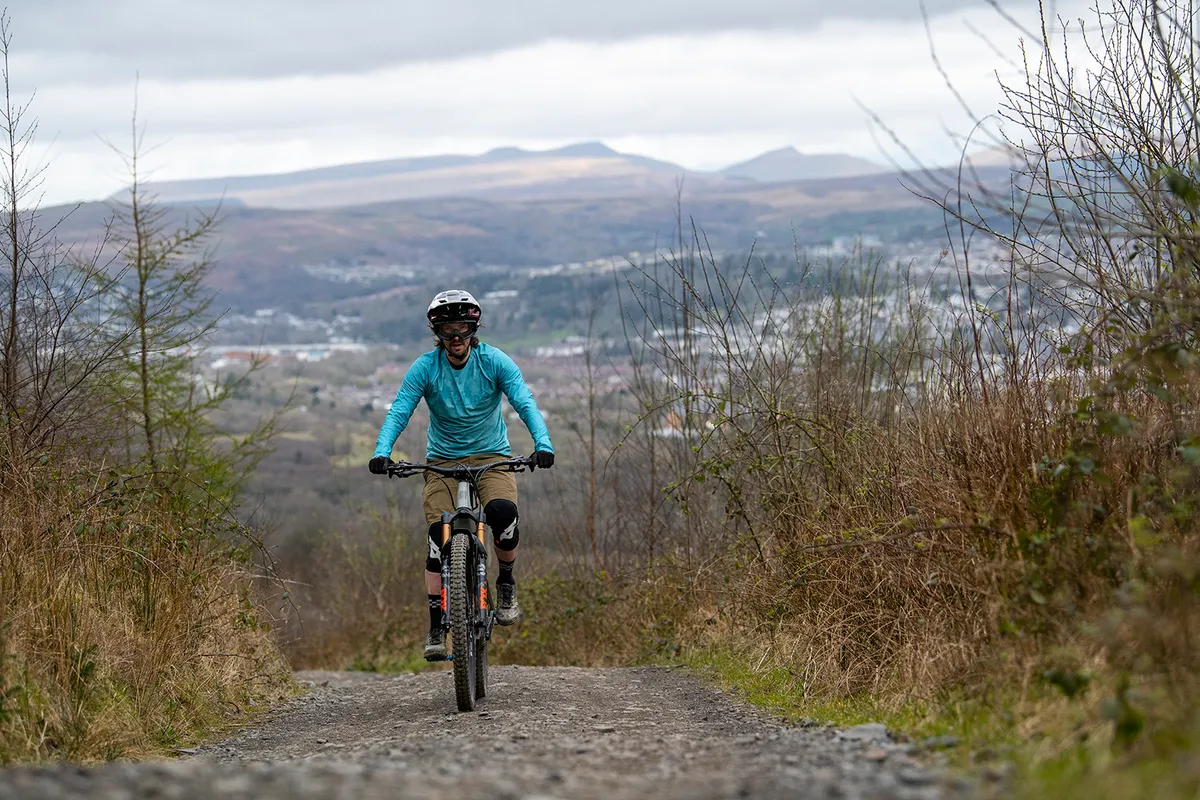
Arguably, the Saracen feels most at home on ascents and flatter sections of trail.
Battery life
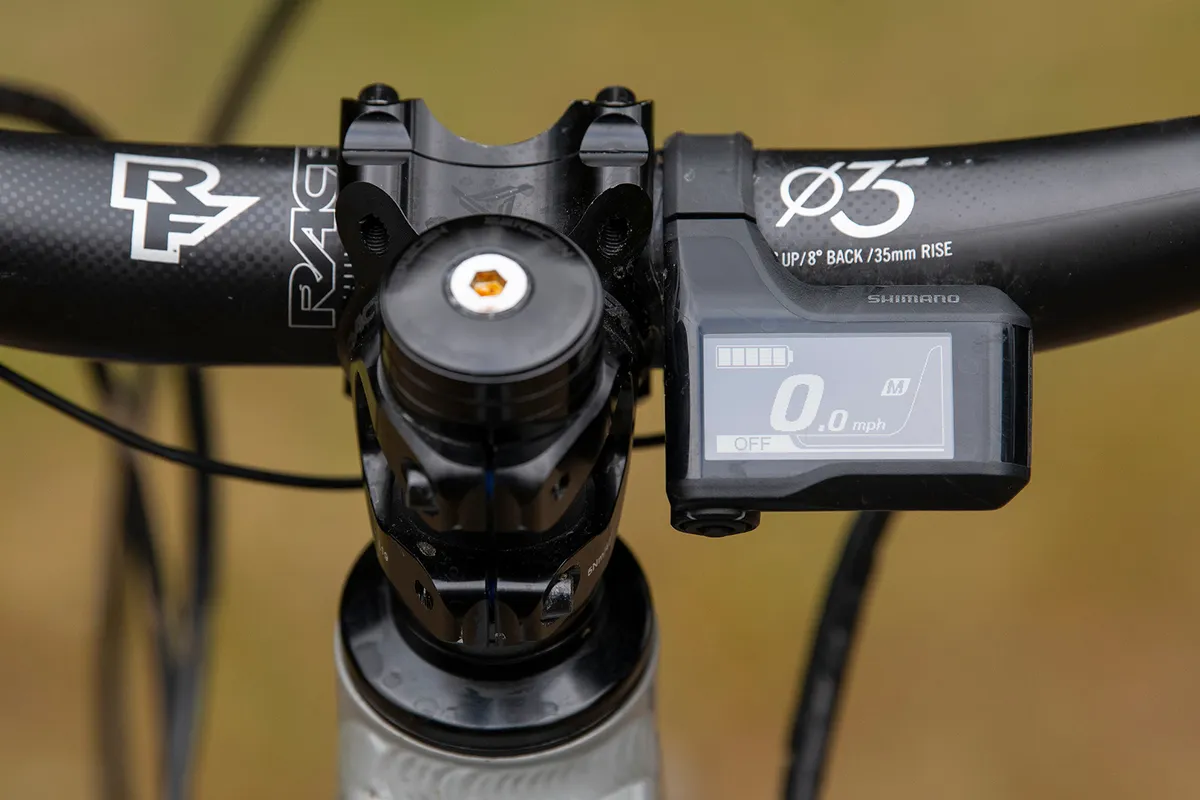
With the smallest battery out of the ebikes in this year’s test, the Ariel’s range was disappointing.
Although it was possible to crack 1,000m of elevation change on a single charge of the 504Wh unit, care needed to be taken with mode usage, and I found myself constantly keeping an eye on the battery charge display.
Riding in groups where others had larger-capacity batteries was frustrating, because I was often in a lower assistance mode, either going slower than them or working harder to keep up.
Saracen Ariel 50E Elite descending performance
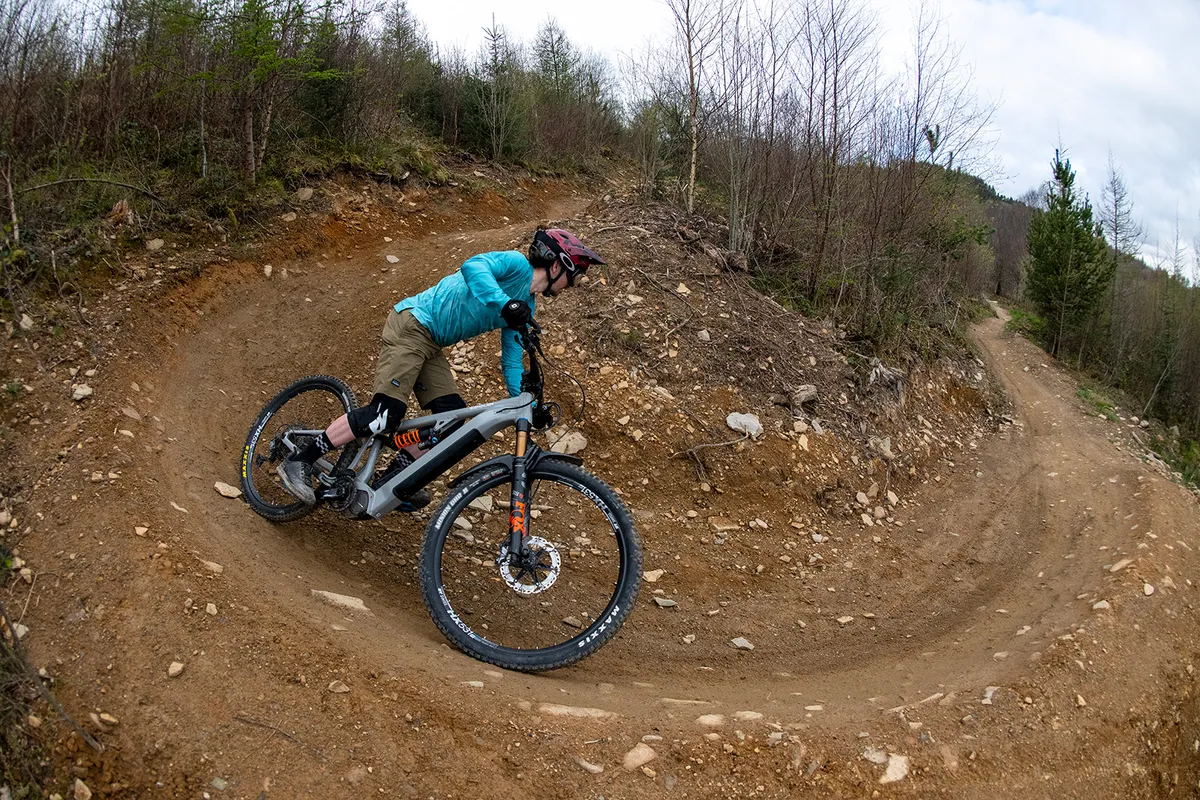
The Ariel shows masses of potential on the downhills.
As on the climbs and flat sections, the rear suspension provides excellent smooth traction, absorbing small bumps with total proficiency, while also providing enormous amounts of bottom-out resistance to cushion harsh landings.
There’s also plenty of mid-stroke support to pop and push down the trail.
The nodding effects of under-damped or unsupportive suspension were resisted, and the bike’s chassis remained stable over undulations down the trail.
My body’s weight distribution remained balanced and was easy to maintain in its central position, helping boost grip and control.
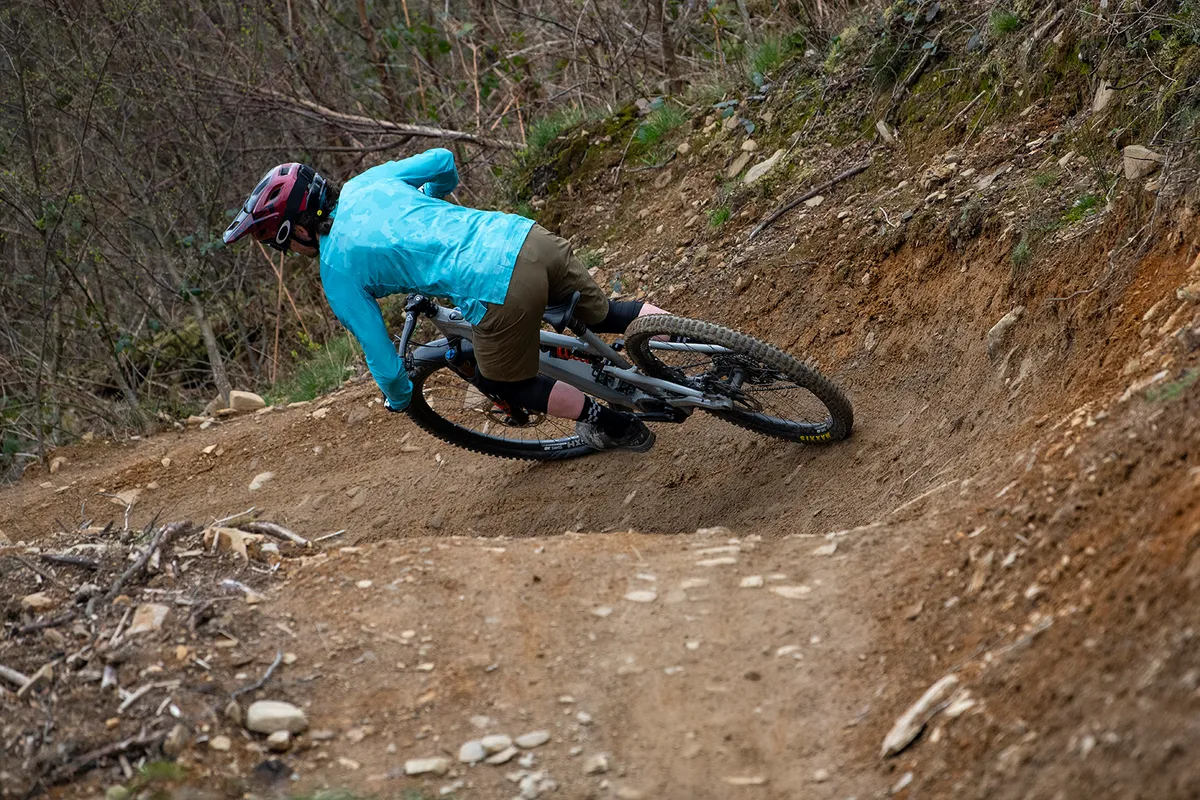
Thanks to the long wheelbase, combined with the supportive suspension, on faster, less steep tracks the Ariel remained calm and composed, and only the chunkiest, roughest terrain really destabilised it.
Despite that, its low overall weight helped improve nimbleness, and changing direction quickly was much easier than the wheelbase and chainstay figures would suggest.
This is helped by the incongruous – in the context of the rest of the bike’s geometry – head angle, which is steeper than I would have expected.
However, the head angle also proved to be one of the Ariel’s Achilles heels.
When the trails became steeper, the front end was surprisingly easy to overload with weight in sharp, steep, on-the-brakes turns, or when riding off large, slow-speed drops to flat.
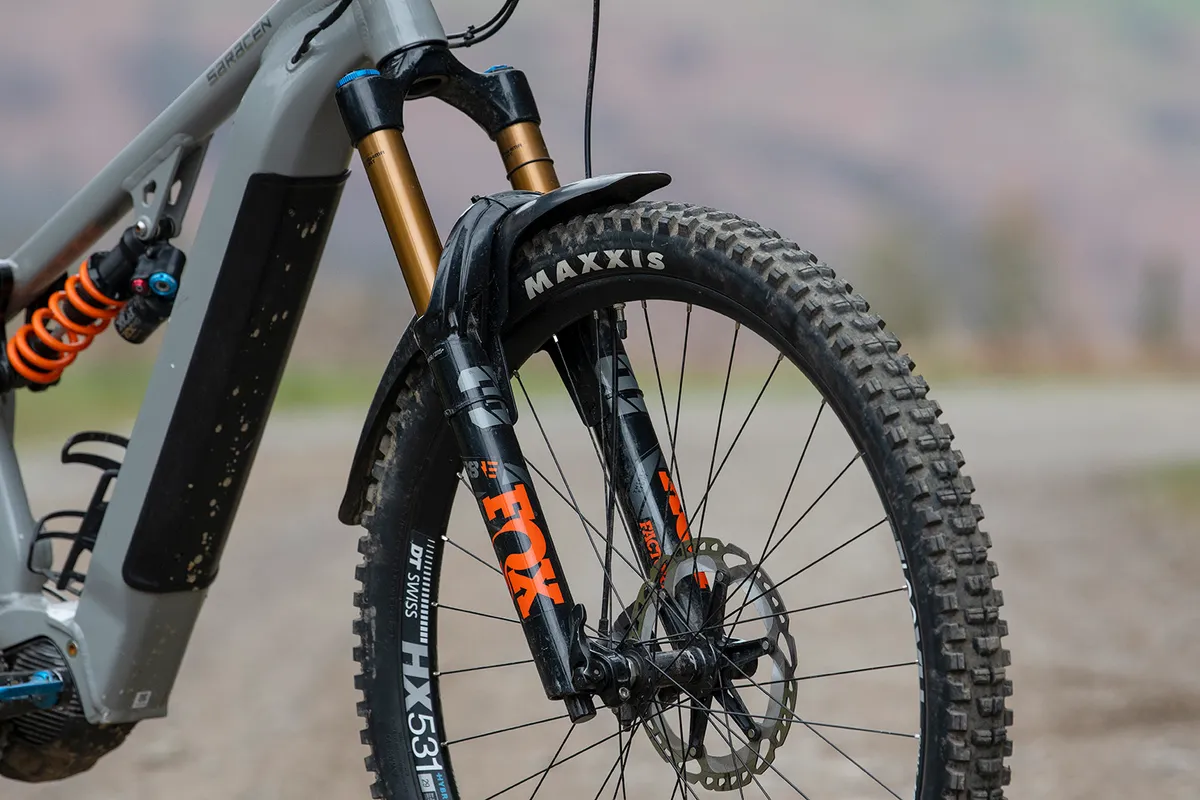
Despite the frame’s long reach encouraging a forward-biased riding position, and the Fox 38 fork being more than up to the job of providing plenty of support, I ended up compensating for the relatively steep head angle by pushing my weight off the back of the bike.
While this helped reduce the feelings of an overloaded front wheel, it also made the Ariel’s steering become skittish and harder to control, increasing the chances of the front end tucking underneath me in high-load situations.
A slacker head angle would increase the amount of load a rider could put through the front wheel and would match the rest of the bike’s figures.
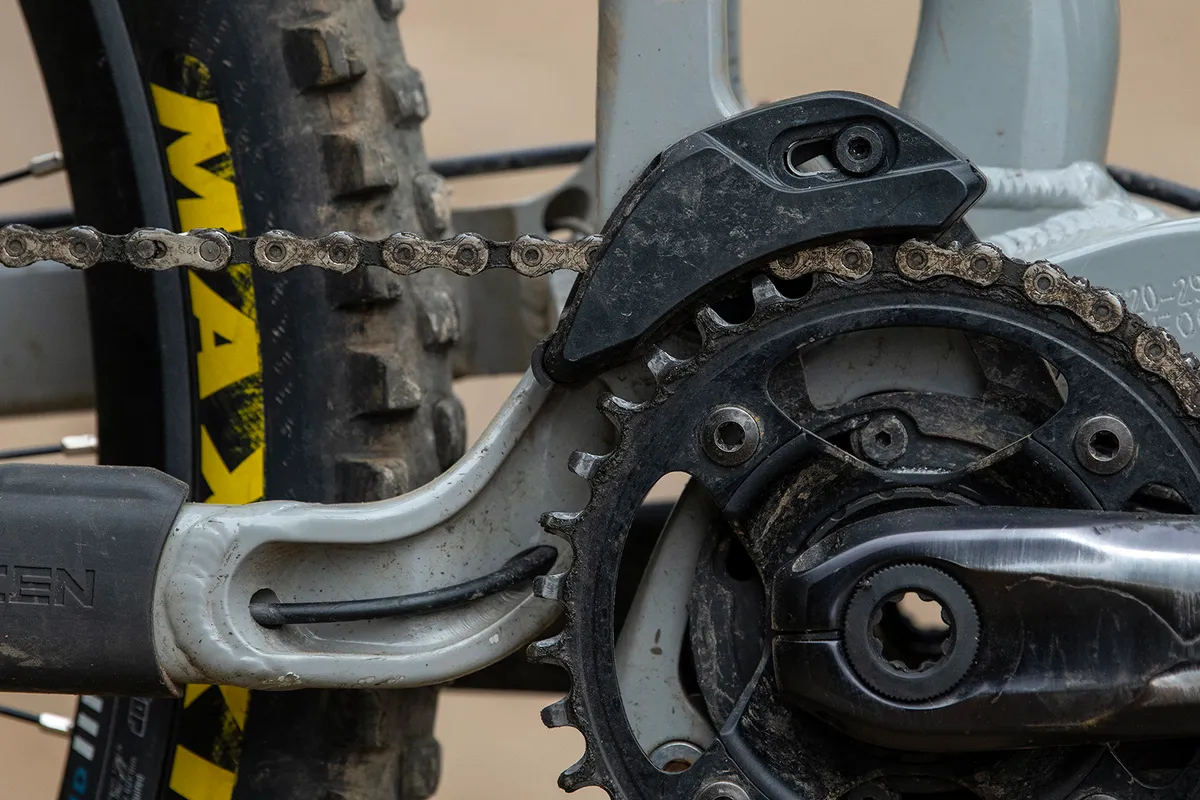
Finally, the thin sidewall, harder-compound tyres accentuated an occasional lack of control and grip on steeper trails.
They struggled to provide enough chemical grip on wet, slippy roots or predictable mechanical bite on softer trails, thanks to the higher pressures required to support the carcass, which was all too easy to deform.
I punctured the rear tyre multiple times during the test period, eventually replacing it with a Maxxis Minion DHR II with MaxxGrip compound and DoubleDown casing.
How does the Saracen Ariel 50E Elite compare?
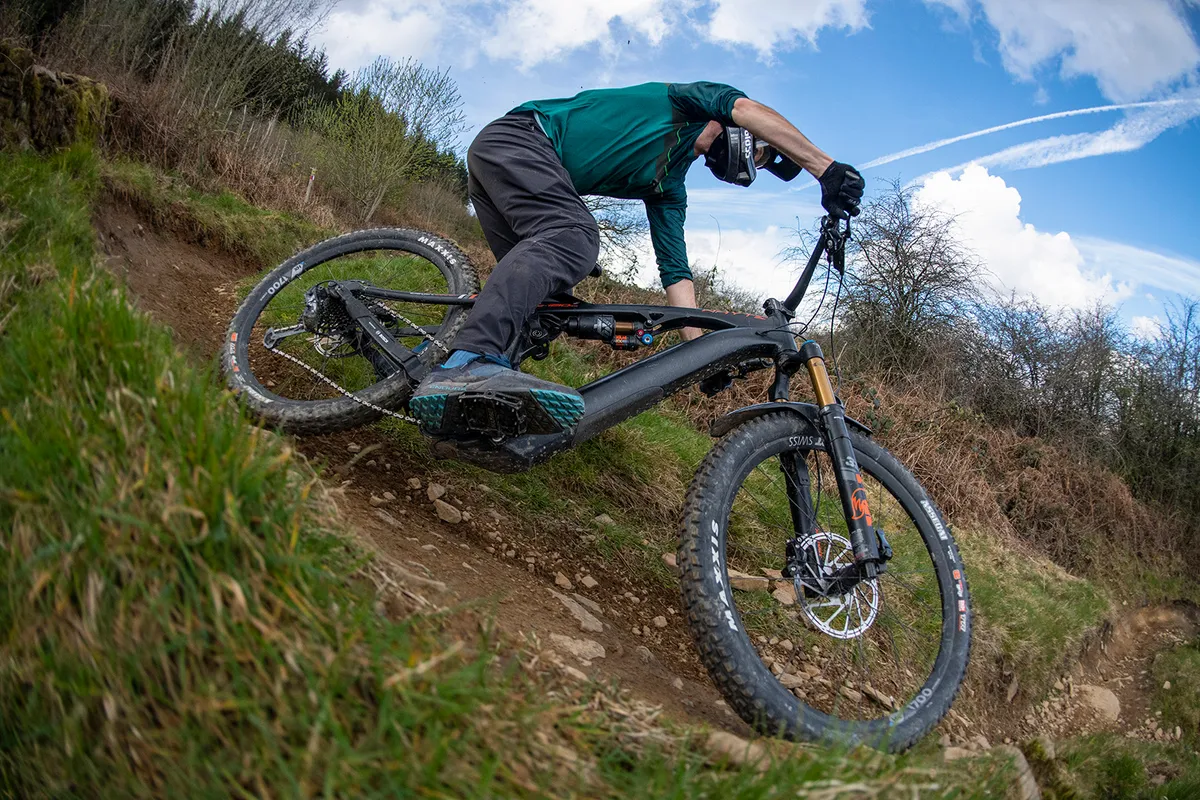
Most of the Ariel’s geometry figures make it seem closer to a thoroughbred electric enduro bike, such as the Whyte E-180 RS or Giant Reign E+, rather than a trail bike.
However, the Ariel doesn’t quite offer the same levels of competence on the steepest and gnarliest terrain as the category’s leaders.
That’s mostly down to the comparatively steep head angle and compromised tyres. When ridden back-to-back with these bikes, the Ariel feels more suited to trail riding rather than enduro thrashing.
In terms of travel, it’s got the same figures as the Specialized Turbo Levo. And although its geometry is longer in all other aspects than the Spesh, the Turbo Levo has a slacker head angle.
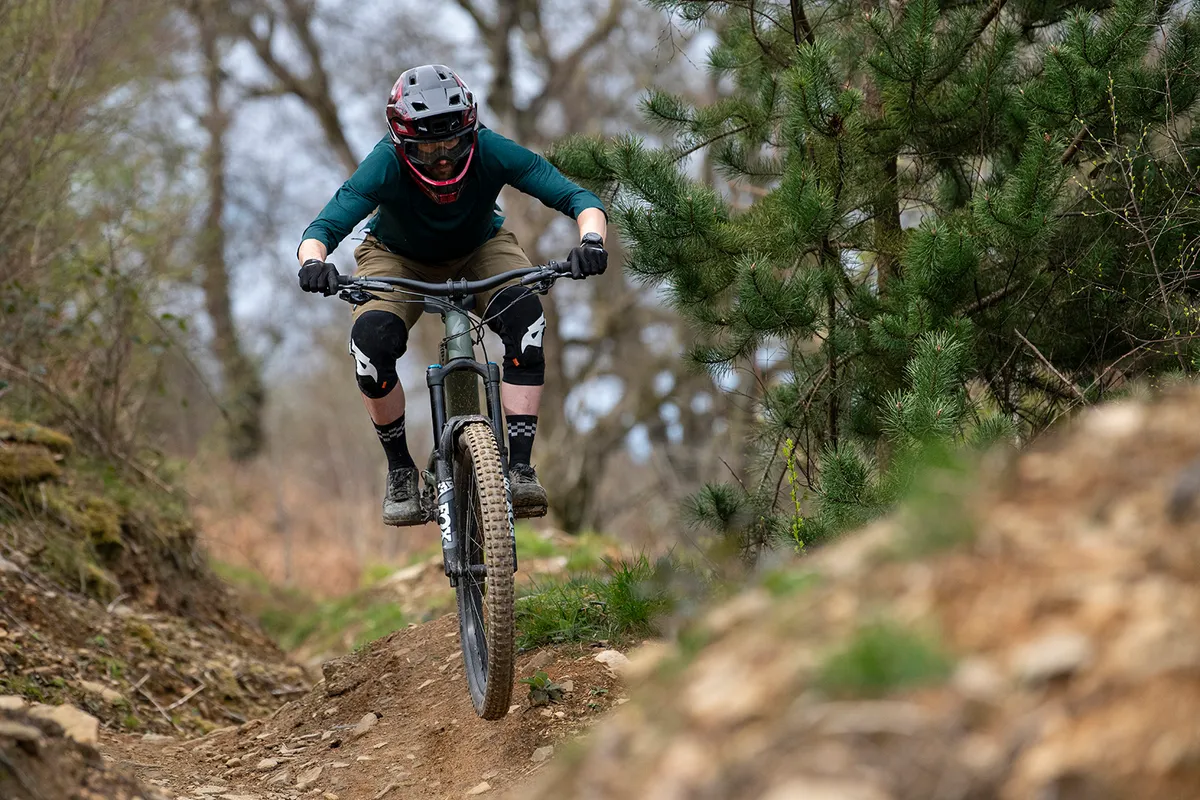
This drives home the point that every one of a bike’s figures needs to be spot-on for it to ride well.
The small 504Wh battery is disappointing and unless Saracen changes its frame’s design, it can’t be swapped out for the bigger 630Wh unit, due to a considerable difference in battery size.
Bar the tyres and battery, the rest of the bike is well-specced and needs no upgrading, representing good value for money.
How we tested
Despite this being the inaugural edition of our eMTB Bike of the Year test, we’ve had plenty of experience testing ebikes to their absolute limits. That means finding out which of these eight bikes is the best electric mountain bike currently on sale was made a little easier.
Although that’s not to say our job was simple, and choosing a winner came down to the wire, where the second and first place bikes swapped positions more times than we checked our tyre and shock pressures.
The majority of the ebike testing happened in Scotland’s Tweed Valley, home to the legendary Glentress trail centre, Golfie enduro tracks and Innerleithen downhill runs. The terrain we tested the bikes on, therefore, was wide in scope and representative of what a modern enduro bike should be able to handle, whether that was gravity-fuelled laps on the DH tracks, epic enduro missions with long descents or gruelling trail rides with hours in the saddle.
To win this year’s test, we were looking for a bike that offered the best all-round package with fewest compromises and was able to perform on every type of riding we could throw at it. In an ode to a bike tester’s cliché, it had to descend like a downhill bike, pedal and climb like a cross-country bike and be as comfortable to ride as an enduro bike.
Our 2022 eMTB Bike of the Year contenders are:
Saracen Ariel 50E Elite bottom line
The Ariel has most of the ingredients needed to create a top-performing bike.
It’s good value for money and is fitted – for the most part – with a host of drool-worthy parts, including Fox suspension and Shimano’s EP8 motor.
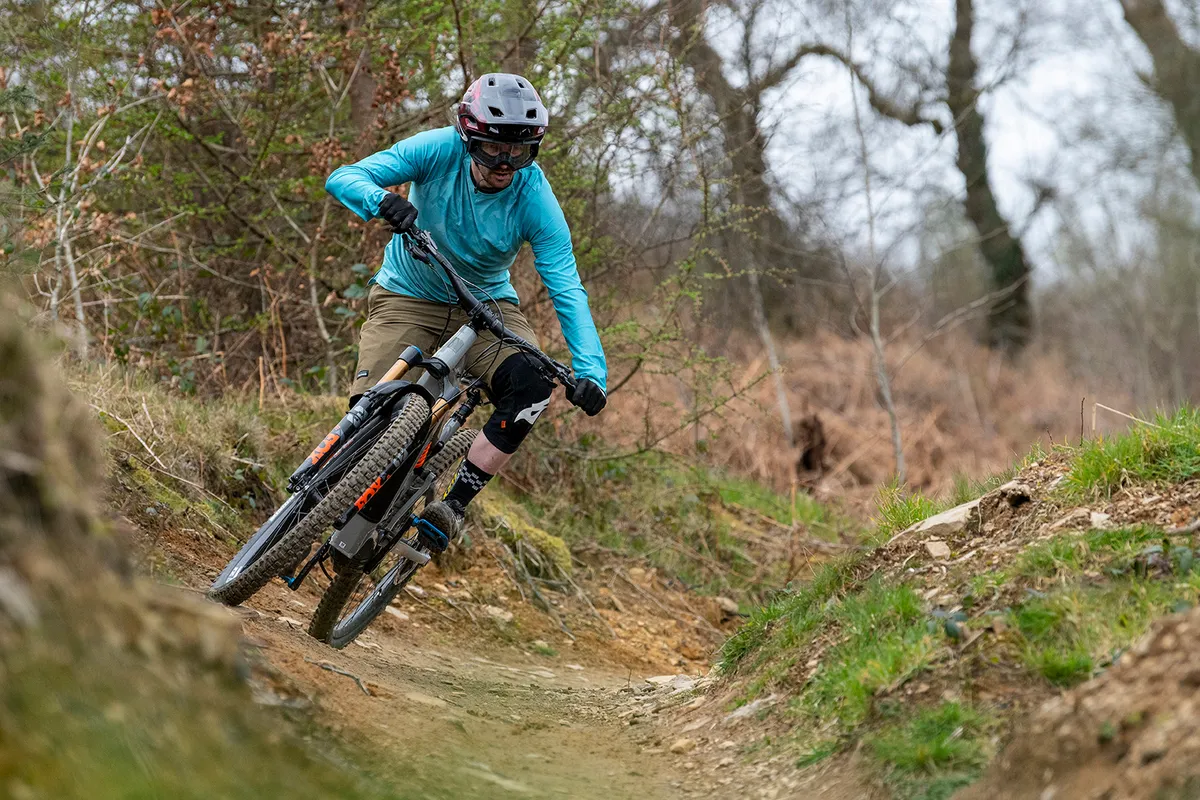
It nearly scores a home run with its geometry, thanks to a lengthy reach, wheelbase and chainstay figures, but these are let down by an unfittingly steep head tube angle, which seemed to cause issues on the steeper and gnarlier trails the Ariel is claimed to be designed for.
Unsuitable tyre casings and compounds for the bike’s weight and intended use, along with the small battery, tainted usability and were a compromise too far.
Product
| Brand | giant |
| Price | 6500.00 GBP |
| Weight | 24.0300, KILOGRAM (L) - |
Features
| Fork | Fox 38 Factory GRIP2 EVOL, 160mm (6.3in) travel |
| br_stem | Race Face Turbine R 35, 40mm |
| br_chain | KMC E12 |
| br_frame | Series 3 custom-butted and hydroformed 6013 Alloy, 150mm (5.9in) travel |
| br_motor | Shimano EP8/Shimano BT-80350 504Wh/Shimano SC-EM800 |
| Tyres | Maxxis Minion DHR II EXO TR WT 29x2.4in (f), Maxxis Minion DHR II EXO TR WT 29x2.4in (r) |
| br_brakes | Shimano XT M8120, 203/203mm rotors |
| br_cranks | Shimano XT M8150, 34t |
| br_saddle | Saracen Custom Cromo MTB |
| br_wheels | DT Swiss HX 531 rims on Shimano XT M8100 |
| br_headset | Prestine PT-F13 |
| br_shifter | Shimano XT M8100 |
| br_cassette | Shimano XT M8100, 10-51t |
| br_seatpost | KS Lev Integra (dropper) |
| br_gripsTape | ODI Elite Motion |
| br_handlebar | Race Face Next R Carbon 35, 780mm |
| br_rearShock | Fox DHX2 Factory |
| br_availableSizes | S, M, L, XL |
| br_rearDerailleur | Shimano XT M8100 (1x12) |
